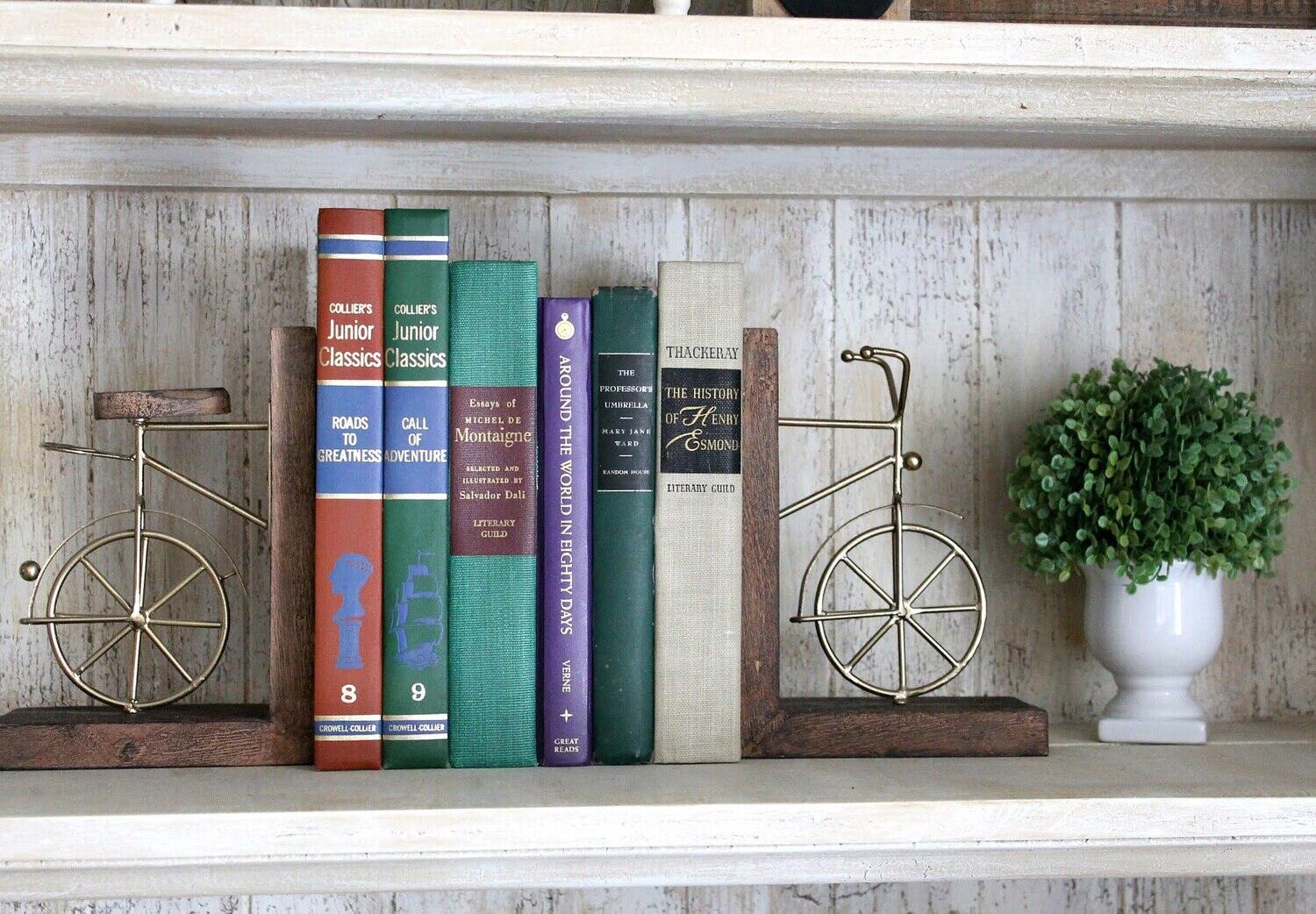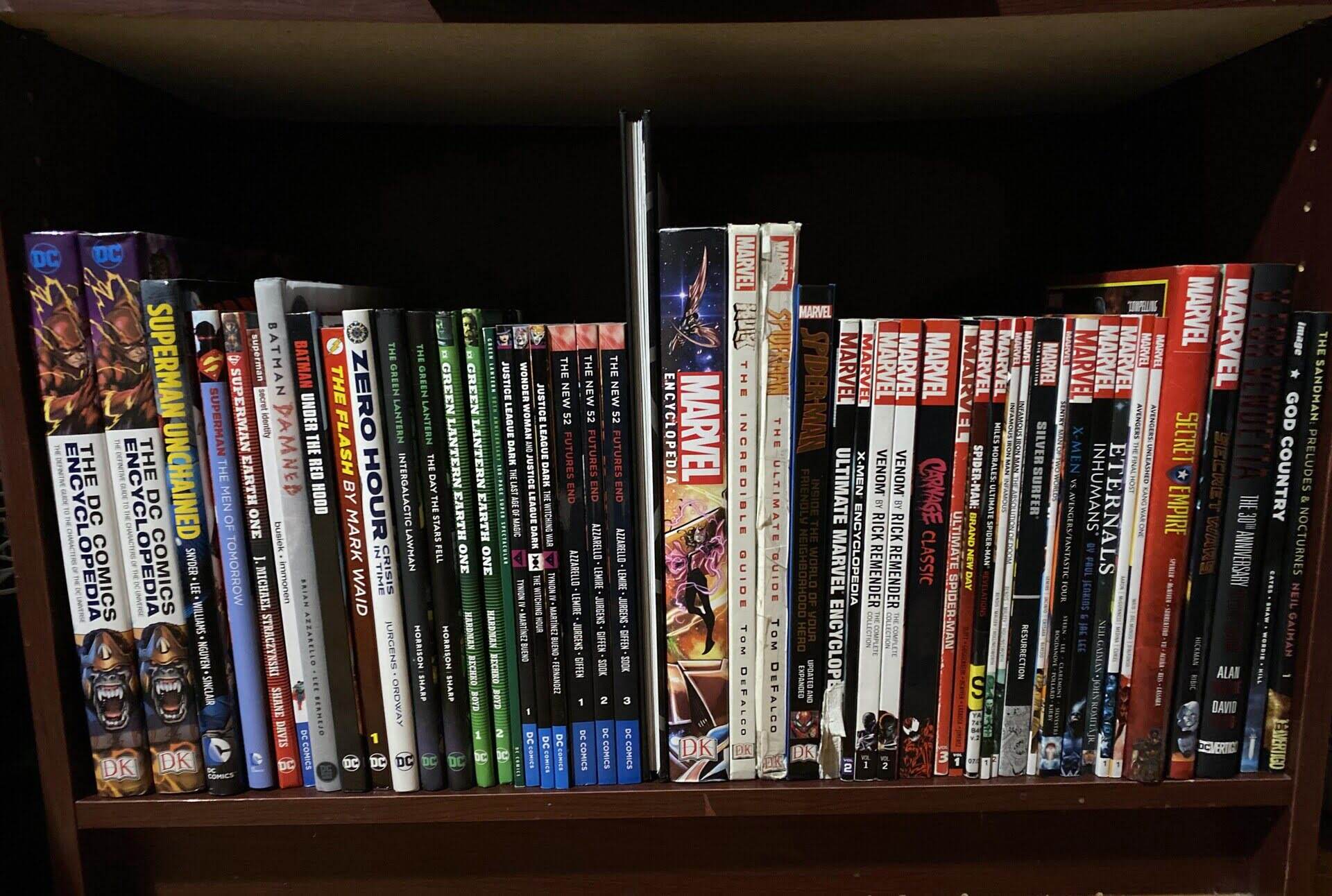

Articles
How To Store Books In A Garage
Modified: January 20, 2024
Learn effective ways to store your articles in a garage and keep them organized. Maximize space and protect your books with these storage tips.
(Many of the links in this article redirect to a specific reviewed product. Your purchase of these products through affiliate links helps to generate commission for Storables.com, at no extra cost. Learn more)
Introduction
Storing books in a garage can be a challenge, as this space is typically not designed for storing delicate items like books. However, with the right preparation and storage solutions, you can create a suitable environment to preserve your beloved books. In this article, we will explore the best practices for storing books in a garage, ensuring their long-term protection and easy accessibility.
Before diving into the specifics of storing books in a garage, it is important to understand the potential pitfalls. Garages are susceptible to temperature fluctuations, humidity, dust, and pests, all of which can damage books over time. With this in mind, it is crucial to carefully assess the storage conditions in your garage and take necessary measures to mitigate these risks.
By implementing proper storage techniques and investing in appropriate storage solutions, you can create a safe and organized space for your book collection. From cleaning and decluttering the garage to selecting the right storage containers and arranging books strategically, we will guide you through each step of the process.
It is important to note that while these recommendations aim to create optimal conditions for book storage, a climate-controlled indoor environment, such as a library or a dedicated bookshelf in your home, is always the best option. Nevertheless, we understand that garage storage may be the only viable option for some individuals due to space limitations or other constraints. In such cases, following these guidelines can help you make the most of your garage space and keep your books in good condition.
Without further ado, let’s begin exploring how to store books in a garage and ensure their longevity and preservation.
Key Takeaways:
- Properly assess your garage space for potential risks like temperature fluctuations, humidity, and pests before storing books. Take measures to prepare the space, choose suitable storage solutions, and arrange books strategically for easy access and protection.
- Regularly maintain and monitor the condition of your books in the garage by inspecting for damage, controlling temperature and humidity, preventing pests, and handling books with care. Rotate books, maintain organization, and periodically allow them time in a climate-controlled indoor environment for optimal preservation.
Read more: How To Store Books In Garage
Assessing the Garage Space
Before you begin storing books in your garage, it is essential to assess the space and identify any potential risks or limitations. Understanding the conditions of your garage will help you determine the necessary precautions and choose appropriate storage solutions.
Start by inspecting the garage for any signs of moisture, leaks, or excessive humidity. These can be detrimental to books, causing mold, mildew, or warping of pages. Look for any cracks or gaps in the walls, ceiling, or floor that may allow moisture to seep in. Consider installing seals or weather stripping to keep out moisture and pests.
Next, assess the temperature fluctuations in your garage. Extreme heat or cold can damage books, causing pages to become brittle or colors to fade. Aim for a temperature range between 60°F and 75°F (15°C – 24°C) for optimal book storage. If the garage experiences extreme temperature swings, you may need to insulate it or invest in a dehumidifier or heater to maintain a more stable environment.
In addition to temperature and moisture, evaluate the garage’s exposure to direct sunlight. Prolonged exposure to UV rays can result in fading and deterioration of book covers and pages. Consider using curtains or blinds on windows or covering the books with protective sleeves or book wraps to shield them from sunlight.
Furthermore, take note of any potential pest infestations in the garage, such as rodents or insects. These critters can damage books by chewing on pages or creating nests. Ensure that the garage is properly sealed and consider using pest control measures to prevent infestations.
Lastly, consider the available space in your garage and how it can accommodate your book collection. Take measurements to determine the amount of shelf or storage space needed. Assess the structural integrity of existing shelves or consider installing sturdy, wall-mounted bookshelves or storage racks. Maximize vertical space by utilizing tall shelves or investing in stackable storage containers.
By thoroughly assessing the garage space and addressing any potential concerns, you can create a suitable environment for storing your books. Next, it’s time to prepare the garage for book storage.
Preparing the Garage for Book Storage
Once you have assessed the conditions of your garage, it’s important to take necessary steps to prepare the space for storing books. By implementing a few simple measures, you can ensure a clean and safe environment for your book collection.
Clean the garage thoroughly, removing any dust, dirt, or debris. Sweep the floors, wipe down surfaces, and vacuum any corners or crevices. A clean environment will help prevent dust from settling on your books and minimize the risk of dirt or debris causing damage.
Consider sealing any gaps or cracks in the walls, ceiling, and floor. This will help keep out moisture, pests, and dust. Use caulk or weather stripping to seal off any openings that could compromise the integrity of your book storage area.
If your garage is prone to high humidity, consider investing in a dehumidifier. This will help regulate the moisture levels in the air and prevent mold or mildew growth. A humidistat can be useful for monitoring and maintaining the ideal humidity level for your books.
Installing proper lighting in the garage is essential for easy access and visibility. Insufficient light can make it difficult to locate and retrieve books. Consider adding bright, energy-efficient LED lights or task lighting to ensure proper illumination of your book storage area.
If your garage has windows, consider covering them with curtains or blinds to protect books from direct sunlight. UV rays can fade book covers and cause damage over time. Alternatively, you can use UV-blocking film on windows to reduce the amount of harmful UV radiation entering the garage.
Organize and declutter the garage to create a dedicated space for your book collection. Remove any unnecessary items or boxes that may attract pests or hinder your access to books. Clearing out the space will not only provide more room for your books but also help maintain a tidy and organized environment.
Finally, consider implementing a system to track and catalog your books. This can be as simple as creating a spreadsheet or using online book cataloging tools. Proper organization will make it easier to locate and retrieve specific books when needed.
By following these steps to prepare your garage for book storage, you can create an environment that is clean, well-maintained, and conducive to preserving the quality of your books. With the garage ready, it’s time to choose the right storage solutions for your book collection.
Store books in a garage by using plastic bins with lids to protect them from moisture and pests. Keep them off the ground on shelves to prevent water damage.
Choosing the Right Storage Solution
When it comes to storing books in a garage, selecting the appropriate storage solution is crucial for preserving the condition and longevity of your collection. Here are some options to consider:
1. Bookshelves: Invest in sturdy, wall-mounted bookshelves that can withstand the conditions of the garage. Choose shelves made of materials such as metal or plastic which are less susceptible to moisture and pests. Ensure the shelves are securely attached to the wall to prevent accidents or damage.
2. Plastic Containers: Opt for clear, plastic storage containers with tight-fitting lids. These containers will protect the books from dust, moisture, and pests. Make sure the containers are clean and dry before using them. Label the containers clearly for easy identification of specific books.
3. Plastic Book Sleeves: If you prefer to keep your books on open shelves, consider using individual plastic book sleeves. These sleeves provide an extra layer of protection against dust and moisture while allowing the books to remain visible. Ensure that the sleeves are made of archival quality materials to prevent any damage to the books.
4. Storage Boxes: Use acid-free storage boxes specifically designed for books. These boxes are sturdy, offer protection from dust and pests, and are stackable for easy storage. Additionally, consider adding silica gel packets inside the boxes to control moisture levels.
5. Lidded Totes: If you need a more portable option, choose durable, lidded totes with handles. These totes provide protection against dust and pests and can be easily moved around if needed. Look for totes with secure latches to ensure the books remain safe and undamaged.
6. Book Bags: For smaller collections or individual books, consider using book bags or book wraps made of protective materials such as acid-free paper or plastic. These can be useful for storing rare or fragile books and provide an extra layer of protection against dust and moisture.
Remember to avoid using cardboard boxes or storing books directly on the floor, as they are more susceptible to moisture and pests. Additionally, when stacking books, avoid overpacking the shelves or containers, as this can lead to damage or warping of the books.
Before selecting a storage solution, consider the available space in your garage, the size of your book collection, and the specific needs of your books. It may be helpful to measure your books to ensure that any storage containers or shelves can accommodate them properly.
By choosing the right storage solution for your garage, you can ensure that your books are protected from external elements and remain in pristine condition. Once you have selected your storage option, it’s time to arrange your books for easy accessibility.
Arranging Books in the Garage
Properly arranging your books in the garage will not only ensure easy accessibility but also help protect them from damage. Here are some tips for organizing and arranging your books:
1. Categorize and Label: Start by categorizing your books into genres, subjects, authors, or any system that makes sense to you. This will make it easier to find specific books when needed. Label the shelves, containers, or bookbags accordingly to keep everything organized.
2. Keep Similar Books Together: Group books of similar sizes and formats together on the shelves or in containers. This will prevent books from getting damaged or distorted due to uneven pressure. For example, keep hardcovers, paperbacks, or magazines separate to avoid any unnecessary strain on the books.
3. Arrange Books Vertically: Store books vertically with their spines facing outward. This not only maximizes space but also prevents books from sagging or warping. Use bookends or adjust the shelf spacing to keep the books upright and stable.
4. Use Bookends or Dividers: When organizing books on shelves, consider using bookends or dividers to separate different sections or categories. This helps maintain order and prevents books from leaning or slumping against each other, which can cause damage over time.
5. Consider Climate Control: If possible, place your book collection away from exterior walls or windows that may be more exposed to temperature fluctuations and direct sunlight. If your garage has a climate control system, try to position the books closer to it to maintain a more stable environment.
6. Leave Space for Air Circulation: Allow sufficient space between the books and the walls or shelves to allow for air circulation. Adequate airflow helps prevent mold or mildew from developing and keeps the books in optimal condition.
7. Regularly Dust and Clean: Dust your books and shelves regularly to prevent dust buildup, which can cause damage to the covers and pages. Use a soft, dry cloth or a duster specifically designed for books. Avoid using water or cleaning agents unless absolutely necessary.
8. Consider Accessibility: Arrange the books in a way that allows for easy access to frequently used ones. This can be achieved by placing them in the front of the shelf or in easily reachable containers. Rearrange the books periodically to ensure equal wear and exposure to light.
Remember to periodically inspect your books for any signs of damage or pests. If you notice any issues, take immediate action to address them and protect your collection.
By following these tips for arranging your books, you can keep your collection organized, prevent damage, and easily find the books you want to read. But maintaining a suitable environment for the books in the garage doesn’t end with arranging them correctly. You also need to take steps to ensure their condition remains optimal over time.
Read more: How To Store Old Books
Maintaining Book Condition in the Garage
While storing books in a garage may pose certain challenges, it is possible to maintain their condition with proper care and maintenance. Here are some tips to help you preserve the quality of your books:
1. Regular Inspections: Regularly inspect your books for any signs of damage, such as mold, insect infestation, or water damage. Catching these issues early allows you to take immediate action and prevent further deterioration.
2. Climate Control: If your garage allows for it, consider investing in a climate control system to regulate temperature and humidity. Keeping these factors at appropriate levels can significantly minimize the risk of damage to your books.
3. Monitor Temperature and Humidity: Keep a thermometer and hygrometer in your garage to monitor temperature and humidity levels. Ideally, aim for a temperature between 60°F and 75°F (15°C – 24°C) and a humidity level between 30% and 50%. Adjust the environment as necessary by using dehumidifiers, heaters, or fans.
4. Pest Prevention: Implement measures to prevent pests from infesting your books. Seal any gaps or cracks in walls or shelves to eliminate entry points for pests. Consider using pest control products or natural remedies like cedar blocks or lavender sachets to repel pests.
5. Regular Cleaning: Dust your books and shelves regularly using a soft, dry cloth or a brush specifically designed for books. Avoid using water or cleaning agents unless absolutely necessary, as they can damage the books. Be gentle when cleaning and avoid putting excessive pressure on the book bindings.
6. Handling with Care: When retrieving or rearranging books, handle them with clean hands and avoid touching the pages directly. Oils and dirt from hands can transfer onto the pages and cause staining or damage. Use bookmarks or book-safe tools to avoid dog-earing or bending the pages.
7. Light Protection: Minimize exposure to direct sunlight, as it can fade book covers and damage pages over time. Consider using UV-blocking film on windows or covering books with protective sleeves or wraps to shield them from harmful UV rays.
8. Proper Shelving: Ensure that your shelves are stable and sturdy to prevent books from falling or getting damaged. Avoid overfilling shelves and leaving enough space for books to breathe and maintain their shape. Use bookends or dividers to provide support and prevent books from leaning or falling over.
9. Rotate Books: Rotate the books periodically to evenly distribute light exposure and prevent any one book from bearing the brunt of sunlight or dust accumulation. This will help maintain a consistent condition among your collection.
10. Maintain Organization: Regularly update your catalog or inventory of books stored in the garage. This will help you keep track of the books and identify any missing or damaged ones. It will also aid in retrieving specific books as needed.
By implementing these maintenance practices, you can ensure that your books remain in good condition despite being stored in the garage. Remember that periodically taking books out of storage and allowing them some time in a climate-controlled indoor environment, such as your home, can also help maintain their longevity.
With these guidelines, you can confidently store and preserve your books in the garage, knowing that they are protected and accessible for your reading pleasure.
Frequently Asked Questions about How To Store Books In A Garage
Was this page helpful?
At Storables.com, we guarantee accurate and reliable information. Our content, validated by Expert Board Contributors, is crafted following stringent Editorial Policies. We're committed to providing you with well-researched, expert-backed insights for all your informational needs.















0 thoughts on “How To Store Books In A Garage”